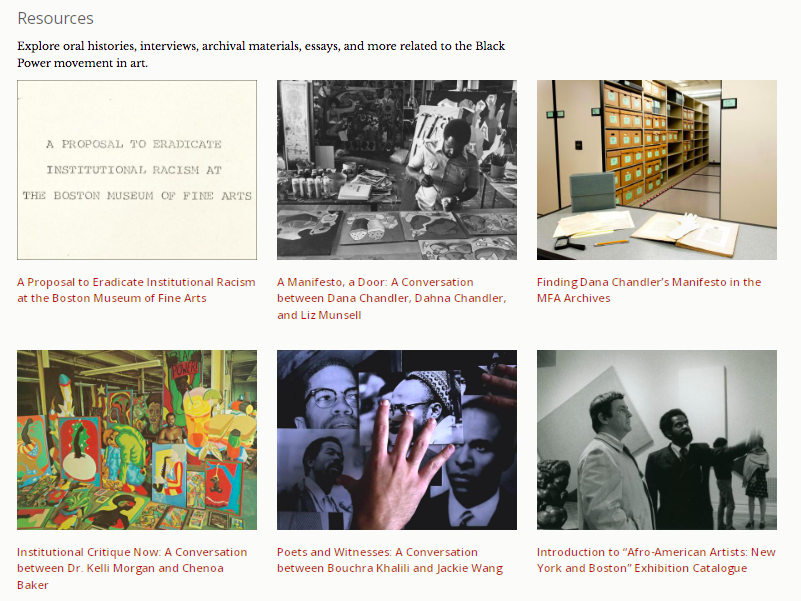Selected press:
Boston Globe, At the MFA, a door opens to the history of Black art in Boston
In April 2021, MFA staff recovered a document long overlooked in the Museum’s archives: “A Proposal to Eradicate Institutional Racism at the Boston Museum of Fine Arts.” Written in 1970 by Boston-based artist, muralist, and community organizer Dana C. Chandler Jr. (b. 1941), the manifesto challenges the MFA (and, by inference, similar institutions) to represent Black artists in their collections and exhibitions, and to financially support Black self-determination in the arts.
Chandler’s rallying cry helped push the MFA to stage the exhibition “Afro-American Artists: New York and Boston” in spring 1970. In 2020—50 years after that exhibition—the MFA acquired Fred Hampton’s Door 2, the second and only surviving version of Chandler’s seminal painting, for its permanent collection.
This online project—a collaboration between the MFA and MoMA—acknowledges the belated institutional recognition of foundational documents and artworks as part of a broader examination of the Black Power movement’s legacy in visual culture.
Boston Globe, At the MFA, a door opens to the history of Black art in Boston
In April 2021, MFA staff recovered a document long overlooked in the Museum’s archives: “A Proposal to Eradicate Institutional Racism at the Boston Museum of Fine Arts.” Written in 1970 by Boston-based artist, muralist, and community organizer Dana C. Chandler Jr. (b. 1941), the manifesto challenges the MFA (and, by inference, similar institutions) to represent Black artists in their collections and exhibitions, and to financially support Black self-determination in the arts.
Chandler’s rallying cry helped push the MFA to stage the exhibition “Afro-American Artists: New York and Boston” in spring 1970. In 2020—50 years after that exhibition—the MFA acquired Fred Hampton’s Door 2, the second and only surviving version of Chandler’s seminal painting, for its permanent collection.
This online project—a collaboration between the MFA and MoMA—acknowledges the belated institutional recognition of foundational documents and artworks as part of a broader examination of the Black Power movement’s legacy in visual culture.

